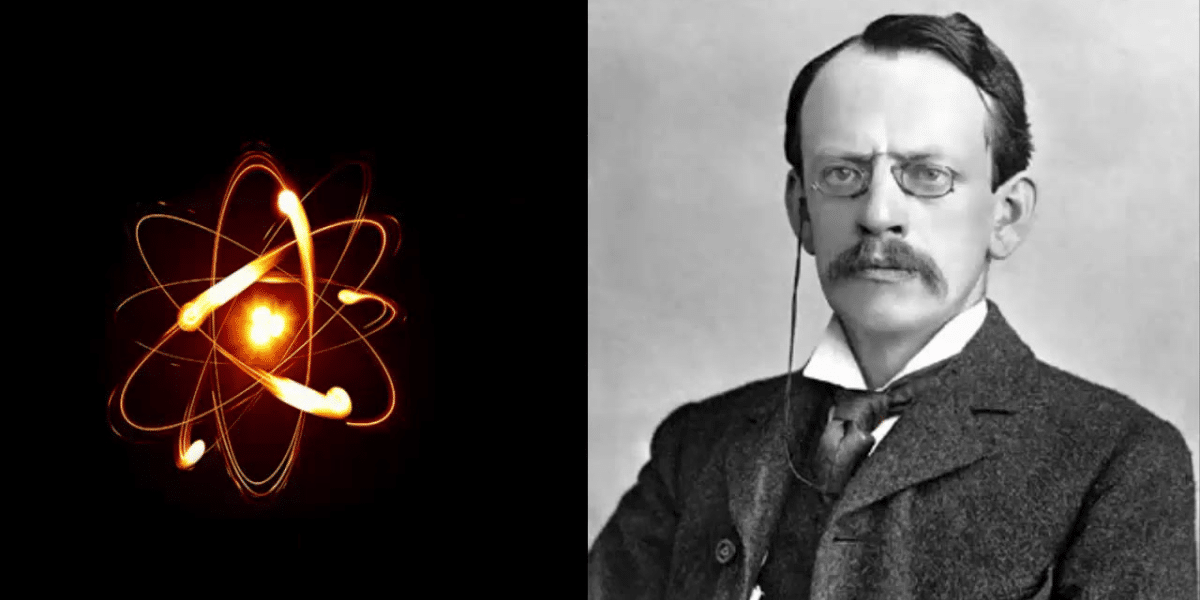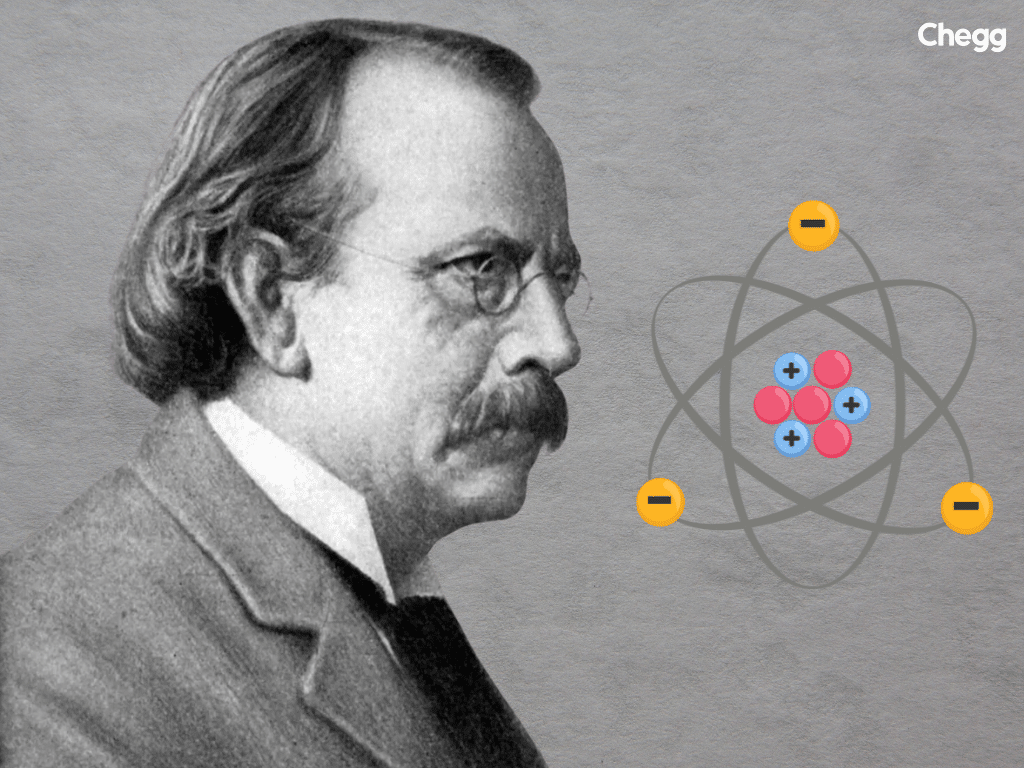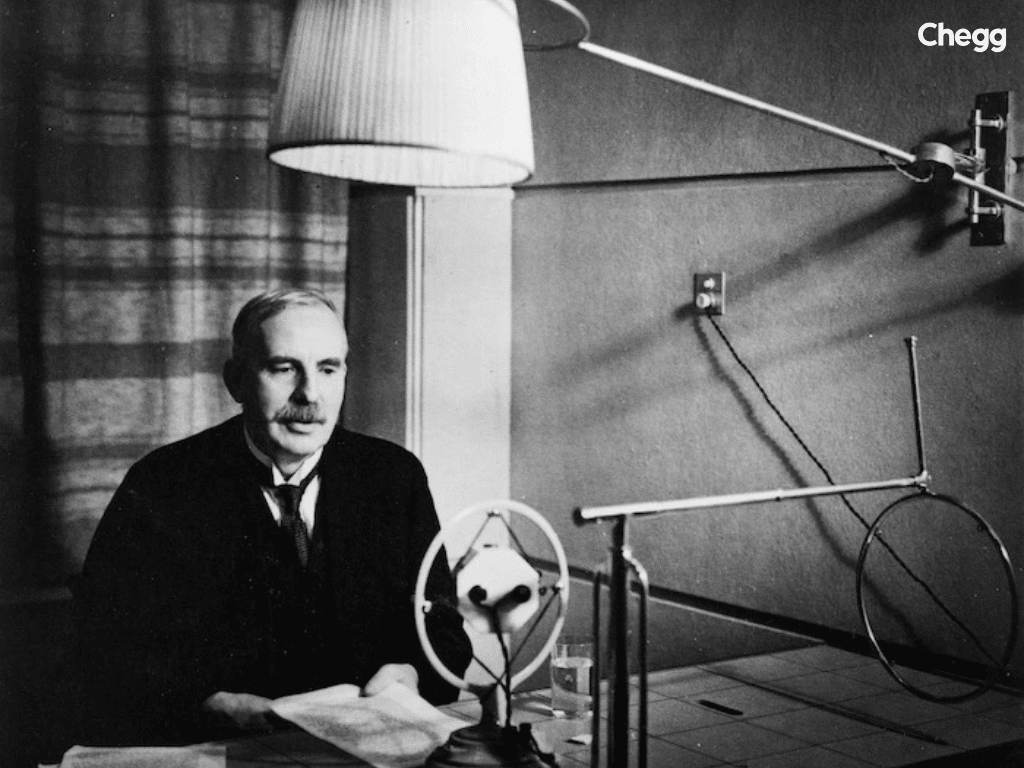
Quick Summary
J.J. Thomson discovered the electron in 1897 through his cathode ray experiments, revealing subatomic particles smaller than atoms.
Ernest Rutherford identified the proton in 1917 using the gold foil experiment, showing that atoms have a dense, positively charged nucleus.
James Chadwick discovered the neutron in 1932 by bombarding beryllium with alpha particles, finding a neutral particle that explained atomic mass discrepancies.
Table of Contents
Who Discovered Electron Proton and Neutron? The electron was discovered by J.J. Thomson in 1897 through his work with cathode rays, revealing the existence of negatively charged particles smaller than atoms. In 1917, Ernest Rutherford identified the proton through his gold foil experiment, demonstrating that atoms contain a dense, positively charged nucleus. James Chadwick discovered the neutron in 1932 after bombarding beryllium with alpha particles, finding a neutral particle in the nucleus that explained atomic mass discrepancies. These discoveries revolutionized atomic theory, helping scientists understand the structure of the atom and leading to advancements in nuclear physics and chemistry. Together, they laid the foundation for much of modern science.
Atoms are the building blocks of matter. They are composed of three primary subatomic particles: electrons, protons, and neutrons. But have you ever thought about who discovered the electron proton and neutron? The journey of who discovered electron proton and neutron
is a fascinating tale of scientific curiosity. These particles play an important role in the structure of the universe.
Understanding them has prompted groundbreaking advancements in various fields of material and nonmaterial science.
An electron possesses a negative elementary electric charge. Scientists consider electrons the first generation of lepton particles because they lack known substructures or components.
In the nineteenth century, mainstream researchers were investigating the nature of matter. A finding by J.J. Thomson (Who discovered the electron) would provide some answers to these questions. “Who discovered the electron” J.J. Thompson was the scientist who discovered the electron. He found the electron, which is a subatomic molecule.
Mainstream researchers credited J.J. Thomson Who discovered the electron. His experiments showed that particles were not indivisible, contrary to the prevailing belief at that time. Rather, they contained smaller particles. Thomson’s work established the base for modern atomic theory and opened new avenues for further examination of subatomic particles. His discovery acquired him the Nobel Prize in Physical science in 1906.
J.J. Thomson’s (Who discovered the electron) work was a defining moment in how we might interpret matter. His discovery of the electron changed the way we look at atoms and prompted new headways in science. So when we inquired, “Who discovered the neutron ?” The answer is J.J. Thomson.

Some of the basic properties of electrons can be given as
In the 19th century, scientists discovered that a glass tube, evacuated of air and fitted with electrodes, emitted a fluorescent glow when an electric charge passed through it, known as a cathode ray. “Who discovered the neutron” J.J. Thomson’s experiments with this phenomenon led to the identification of electrons in 1897.
He observed that the rays, emanating from the cathode, were attracted by a positive charge, suggesting they were negatively charged particles. By subjecting the cathode rays to a magnetic field, Thomson confirmed their deflection, supporting his theory. This groundbreaking discovery revolutionized physics, revealing the existence of subatomic particles and fundamentally altering scientific understanding.
Thomson’s meticulous experiments in evacuated glass tubes, powered by high voltages, unveiled the electron’s nature and behavior, laying the foundation for modern atomic theory.
A neutron is a subatomic particle of an atom denoted by n or n0. It is slightly heavier than a proton and has no net electric charge. “Who discovered the neutron” Chadwick received the Nobel Prize for his groundbreaking discovery in 1935. It’s worth noting that every atom, except hydrogen, contains neutrons. Hydrogen atoms consist exclusively of protons and electrons.
“Who discovered the neutron” The discovery of the neutron by Sir James Chadwick was another milestone in the field of atomic physics. A British physicist is the man behind this groundbreaking discovery. His work filled a basic hole in how we might interpret nuclear design.
In 1932, James Chadwick (Who discovered the neutron) conducted research that would change the course of science. He bombarded beryllium atoms with alpha particles. When these particles hit the beryllium. Highly penetrating radiation was emitted. Chadwick placed paraffin wax near the beryllium to detect these emissions. He noticed that protons were being ejected from the paraffin wax at high speeds.
The energy and speed of these protons couldn’t be made sense of by any known particles. Chadwick understood that another subatomic molecule was responsible for this peculiarity.
Chadwick’s experiments proved the existence of a new particle, which he named the “neutron.” Unlike protons and electrons, neutrons have no charge. They assume an essential part in the core of a molecule, giving soundness and mass. Chadwick’s discovery was a monumental achievement, earning him the Nobel Prize in Physics in 1935.
When we ask, “Who discovered the neutron?” or “Neutron was discovered by whom?” the answer is Sir James Chadwick. His revolutionary experiment with beryllium and paraffin wax led to the discovery of the neutron. It is a particle that has been fundamental in shaping our understanding of atomic structure. Chadwick’s work has had a lasting impact, paving the way for further research and discoveries in the field of atomic physics.

Some of the basic properties of Neutron can be given as
“The atom’s fundamental particle, represented by the symbols p or p+. It has a mass that is marginally less than a neutron and a positive electric charge of +1e elementary charge.
Protons are particles that have a positive charge. The atomic number (Z) of an atom is equal to the number of protons in its nucleus. A proton is typically represented as p, and its charge is “+1.” In mathematics, it can be expressed as Proton count equals atomic number. For example, there are 36 atoms in one krypton (Kr) atom. Therefore, there are 36 protons in the nucleus of a krypton atom.
The proton was discovered by Ernest Rutherford, a New Zealand physicist, marking a new chapter in atomic physics. His groundbreaking work significantly influenced our understanding of the atom and its structure.
Ernest Rutherford conducted the famous gold foil experiment in 1909. He fired alpha particles at a thin sheet of gold foil. The expectation was that the particles would pass through the foil with little to no deflection.
However, Rutherford noticed significant deflections of some alpha particles at large angles. This was surprising to him. Therefore, he deduced that the mass and positive charge of the atom were concentrated within a tiny central nucleus.
Based on his gold foil experiment, Rutherford proposed the existence of a positively charged particle in the nucleus of the atom. This article was later named the “proton.” Rutherford’s discovery was groundbreaking and laid the foundation for the modern model of the atom. His work has been instrumental in shaping our current understanding of atomic structure.
When we ask, “Who discovered the proton?” The answer is Ernest Rutherford. His gold foil experiment led to the discovery of the proton.

Some of the basic properties of Protons can be given as
In 1911, Rutherford, alongside Hans Geiger and Ernest Marsden, conducted groundbreaking experiments that reshaped the atomic understanding. Their method involved bombarding ultrathin gold foil with swiftly moving alpha particles—positively charged and akin in mass to hydrogen atoms.
Expecting minimal deflection, adhering to prevailing atomic theory positing uniform mass and charge distribution, they were astonished. Despite most particles passing through, a minute fraction (1 in 8000) ricocheted off, some back toward the source. Rutherford inferred a new atomic model: a mostly empty space with a dense nucleus.
This nucleus, containing the bulk of mass and positive charge, comprises protons and neutrons. Termed the nuclear model, it revolutionized atomic understanding. Rutherford’s insights elucidated the atom’s central, compact nucleus, fundamentally transforming scientific comprehension.
The below table shows the year of discovery, discoverer, mass, and charge of the Electron, Proton, and Neutron:
| Subatomic Particle | Discoverer | Year of Discovery | Charge | Mass |
| Proton | E. Rutherford | 1909 | +1.6×10−19 C | 1.67 ×10−27 kg |
| Neutron | James Chadwick | 1932 | 0 | 1.67 ×10−27 kg |
| Electron | J.J. Thomson | 1897 | −1.6×10−19 C | 9.11 ×10−31 kg |
These subatomic particles contrast in control mass and area inside the molecule, and these distinctions essentially impact their way of behaving and allow us to look at the properties of electrons, protons, and neutrons.
| Property | Proton | Neutron | Electron |
| Charge | Positive (+1) | Neutral (0) | Negative (-1) |
| Location | Nucleus | Outer shells within the atom | Outer shells within an atom |
| Mass (relative to 1 unit) | 1 | 1 | ~1/2000 (compared to a hydrogen atom) |
| Symbol | p | n | e |
Non-fundamental particles are those beyond electrons, protons, and neutrons.
Who Discovered Electron Proton and Neutron? Electron: J.J. Thomson (1897) through cathode ray experiments. Proton: Ernest Rutherford (1917) via gold foil experiment. Neutron: James Chadwick (1932) through beryllium bombardment. These discoveries were crucial in shaping atomic theory. They revolutionized our understanding of matter’s structure at the atomic level.
In this blog, we have investigated the captivating stories behind Who Discovered Electron Proton and Neutron. We dove into the notable trials directed by J.J. Thomson, Sir James Chadwick, and Ernest Rutherford. We additionally brought light to the properties of electrons, protons, and neutrons, including their mass
Understanding these subatomic particles is pivotal for getting a handle on the intricacies of our general surroundings, from the smallest iota to the tremendous universe.
So the next time you wonder, “Who discovered electron proton and neutron?” you’ll know the answer and the incredible science behind it.
Ernest Rutherford discovered the proton in 1917 when he demonstrated that the nuclei of all other atoms contain a proton, which corresponds to the nucleus of the hydrogen atom.
English physicist Sir James Chadwick discovered the neutron in 1932. Until then, scientists believed atoms were electrically neutral because they contained a positively charged nucleus surrounded by a sufficient number of negatively charged electrons.
When working with discharge tubes, Eugen Goldstein saw rays moving from cathode to anode (electrons) and also detected the presence of waves traveling in the opposite direction. In 1886, he was among the first people to observe the proton (then known as potassium).
Joseph John Thomson (J. J. Thomson, 1856–1940) confirmed the discovery of the electron.
Ernest Rutherford announced his findings demonstrating the proton’s existence a century ago.
Ernest Rutherford discovered in 1911 that every atom has a nucleus in its center. Protons that are electrically positive and neutrons that are electrically neutral make up atomic nuclei.
These discoveries reshaped atomic theory, helping scientists understand the structure of atoms and leading to major advancements in physics, chemistry, and nuclear science.
The electron was discovered by J.J. Thomson in 1897, the proton by Ernest Rutherford in 1917, and the neutron by James Chadwick in 1932. These discoveries revolutionized our understanding of atomic structure.

Authored by, Muskan Gupta
Content Curator
Muskan believes learning should feel like an adventure, not a chore. With years of experience in content creation and strategy, she specializes in educational topics, online earning opportunities, and general knowledge. She enjoys sharing her insights through blogs and articles that inform and inspire her readers. When she’s not writing, you’ll likely find her hopping between bookstores and bakeries, always in search of her next favorite read or treat.
Editor's Recommendations
Chegg India does not ask for money to offer any opportunity with the company. We request you to be vigilant before sharing your personal and financial information with any third party. Beware of fraudulent activities claiming affiliation with our company and promising monetary rewards or benefits. Chegg India shall not be responsible for any losses resulting from such activities.
Chegg India does not ask for money to offer any opportunity with the company. We request you to be vigilant before sharing your personal and financial information with any third party. Beware of fraudulent activities claiming affiliation with our company and promising monetary rewards or benefits. Chegg India shall not be responsible for any losses resulting from such activities.